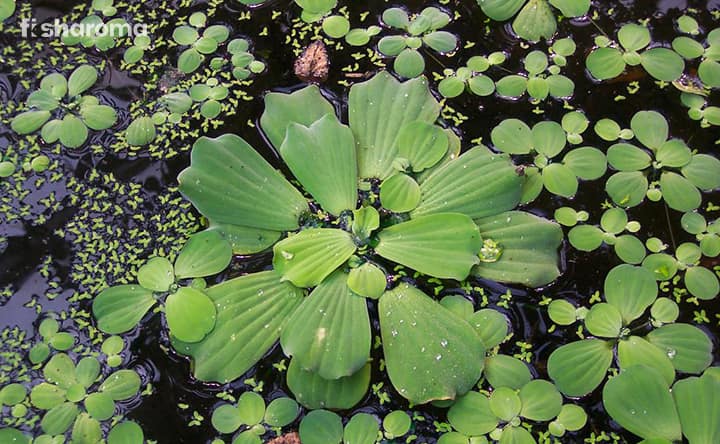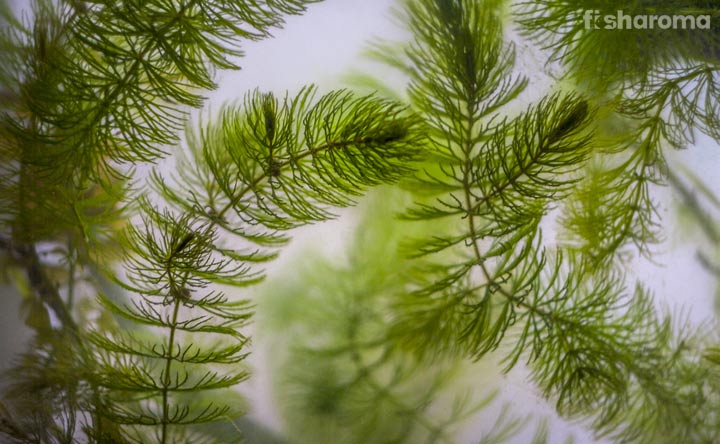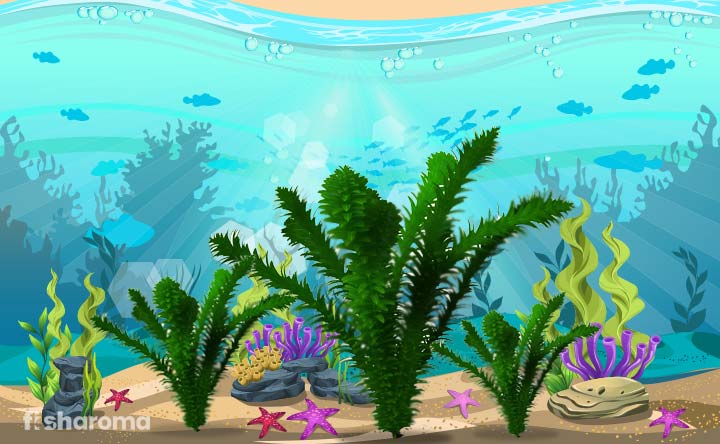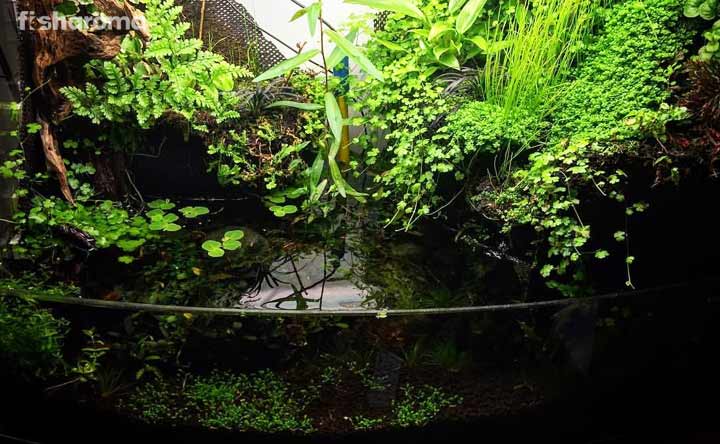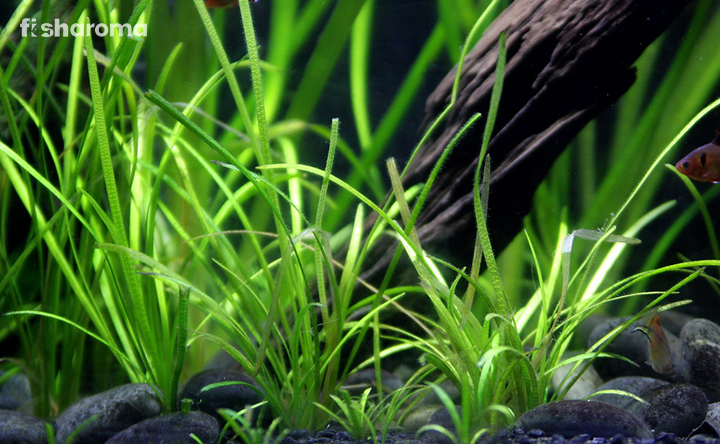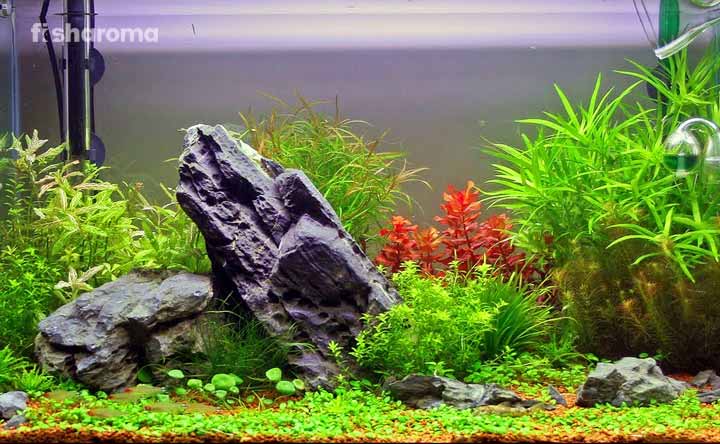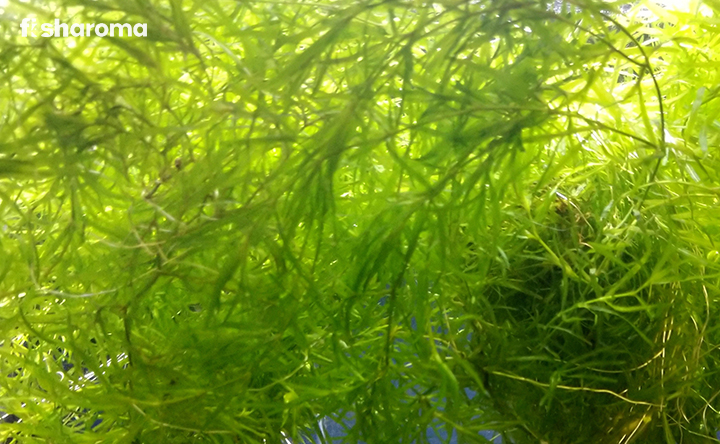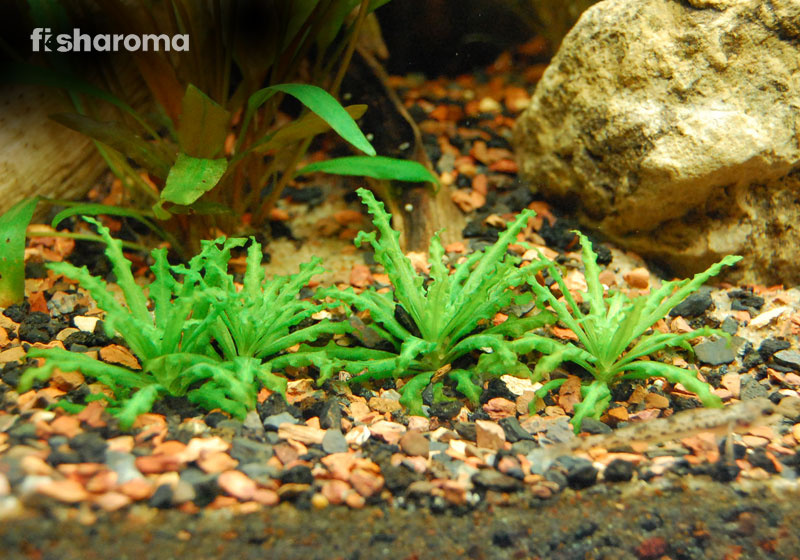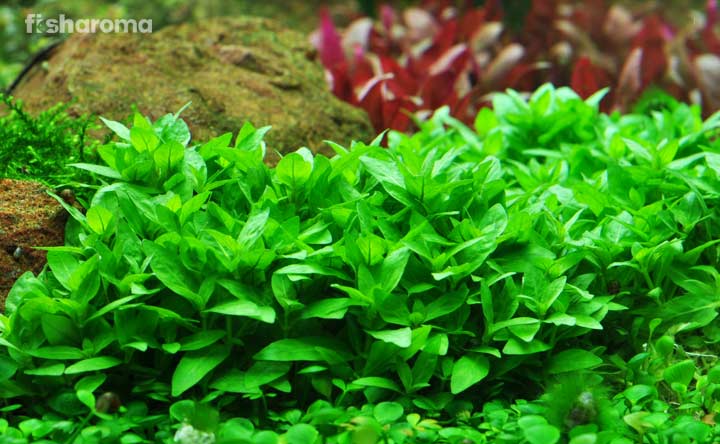Dwarf Hairgrass: The Complete Care Guide
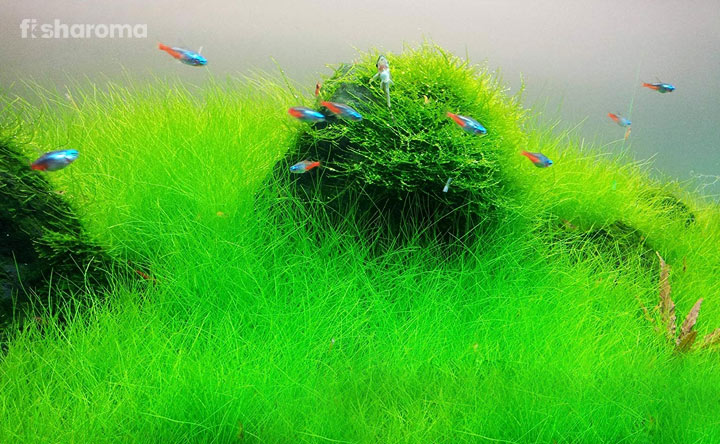
- Origin & Habitat of Dwarf Hairgrass
- Appearance of Dwarf Hairgrass
- Benefits of Dwarf Hairgrass
- Tank Requirements for Dwarf Hairgrass
- Water Type for Dwarf Hairgrass
- Plantation Procedure of Dwarf Hairgrass
- Care & Maintenance of Dwarf Hairgrass
- Propagation of Dwarf Hairgrass
- Compatibility of Dwarf Hairgrass
- Difficulties in Rearing Dwarf Hairgrass
- Summary
Wouldn’t it be nice if your aquarium reflects the same ambiance like that of the wild? After all, the idea of having a mini underwater jungle paradise for your pet fish is tempting in itself. One of the biggest yet healthiest changes that you can make in the environment of your tank is by introducing fauna in it, to be specific, a layer of grass carpet that would give a natural vibe to it. And no aquatic plant can do the job better than the Dwarf Hairgrass. We breakdown for you every little detail that you need to know to grow this elegant grass in your aquarium.
Key Specifications of Dwarf Hairgrass
First and foremost, let us get you acquainted with some of the key specifications of Dwarf Hairgrass that will serve as the background for your research in rearing them at home.
| Scientific Name | Eleocharis parvula |
| Family | Cyperaceae |
| Care Level | Easy |
| Size | 6” (15 cm) |
| Growth Rate | Fast |
| Tank Size | 10-Gallons |
| Lighting | Moderate |
| Water Conditions | 50-85° F (10-29° C), 6.5-7.5 pH, 2-10 KH |
Overview
Dwarf Hairgrass is a species of the cosmopolitan genus Eleocharis, also known as Spike-edge and Spike-rush that belongs to the Cyperaceae family.
Used as a ‘carpet’ inside the fish tank, it is always in great demand by aquarists across the globe, because not only it adds a natural dimension to the captive environment of the tank but it also benefits the life inside the tank with its multi-purpose usage. Giving a seaweed-like vibe to the tank, it makes the pet inside feel more at home. In addition, the graceful movement of the luscious green field in the water is soothing to watch and is thought to remove stress and anxiety if you stare at it for a period of time.
Origin & Habitat of Dwarf Hairgrass
Growing in marshes and mudflats of brackish and freshwater, Dwarf Hairgrass, which is scientifically known as Eleocharis parvula, is found in abundance across various countries of North America and Europe and mildly in few countries of Asia and South America. Countries such as Canada, Mexico, U.S.A, Russia, Vietnam, Kazakhstan, Venezuela, Cuba, Brazil, Japan, and Uzbekistan are fairly populated with this aquatic plant.
With a minimal need of CO2, nutrients, and light, Dwarf Hairgrass is well-suited to survive in most places across the globe, making it an extremely adaptable species.
Appearance of Dwarf Hairgrass
As evident by its name, it has a grass-like appearance that has hair-like blades/strands instead of traditional leaves that are responsible for photosynthesis. Its roots are also extremely thin by nature akin to its strands and are white in color.
It derives its name from it’s Dwarf stature, wherein they grow quite short in comparison to their other related species. In their full stage of maturity, the strands grow to a length of 4-6”.
Their thin dimension also demands them to be more densely packed. This ensures that the entire bottom of your tank is covered in the said carpet and also the color of the grass intensifies when they are densely placed, making it an apt choice of paludariums too.
Benefits of Dwarf Hairgrass
There is a reason or shall we say, multiple reasons as to why Dwarf Hairgrass is a favorite of so many aquarists across the globe. Let’s take a look at some of them.
- Dwarf Hairgrass helps oxygenate the tank water.
- It removes pollutants and toxic components from the water.
- The level of nitrate stays under control in the presence of this aquatic plant.
- It acts as a shelter for bottom-dwelling fish.
- Your aquarium achieves a different aesthetic dimension with the presence of Dwarf Hairgrass in it.
Tank Requirements for Dwarf Hairgrass
In order to set up an ideal tank for Dwarf Hairgrass, you need to keep in mind the following aspects:
Tank Size
Dwarf Hairgrass is one of the very few plants that you can grow in almost any tank size starting from a 10 gallons tank.
Nature of Lighting
In their natural habitat, Dwarf Hairgrass get access to a lot of sunlight, which is why; you need to ensure you provide the same intensity of lighting in your tank. Remember, the lights that you would install in your tank are essential for photosynthesis and the growth of the plant.
Unlike some plants, it is unable to photosynthesize in shaded areas. Generally, most LED lights are suitable for this aquatic plant. However, you would need to keep a balance in the amount of light you are providing since too much light would result in the growth of algae.
Substrate
It is recommended that you use a soft substrate for Dwarf Hairgrass because the roots of this plant are extremely weak and vulnerable to damage. Ideally, 1.5” of sand-based substrate works fine in this case since the fine grains makes it easy for the thin roots to push through. Furthermore, the carpet effect is better achieved on a sand platform since the runners (individual strands of the plant) spread easily and densely on it.
You can also choose a gravel-based substrate, but the size of the granules has to be very small for not only to safeguard the roots of this plant but also to help the nutrients to pass through. Besides, the blades of this grass have a tendency to escape gravel-based substrate easily.
Soil-based substrate also can be used, especially if they are rich in nutrients. You can opt for ADA Aquasoil and CaribSea Eco-Complete, as the substrate for this plant too.
Supplements
This aquatic species needs a heavy proportion of nutrients to thrive, along with a supply of CO2. You would have to provide it with macronutrients such as Phosphorus, Potassium, and Nitrogen; either through the water column or through the substrate. Liquid fertilizers can also be used, although we recommend you to steer away from that.
In order to ensure a dense and fast growth of the plant along with bright lush-green coloration, a dosage of CO2 is required. The ideal portion of CO2 injection is 30 ppm or one-three bubbles per second.
Dwarf Hairgrass can survive without CO2 supplements because moderate lighting along with rich nutrients can suffice its growth, but the presence of CO2 will accelerate the process as well as curb the growth of algae.
Water Type for Dwarf Hairgrass
The following points should serve as a guide for the type of water that you need to provide for the Dwarf Hairgrass in your aquarium.
Temperature
One of the reasons behind the vast distribution of Dwarf Hairgrass across the globe is its ability to survive in a wide range of temperature. Maintaining the temperature of the water in your tank between 50-83° F (10-28° C) should serve this plant well. Keep a tab on the temperature by installing a submerged thermometer in the tank.
pH Level
It prefers fairly neutral water; therefore, avoid using heavy alkaline or acidic water inside your tank. Thus, the pH level of the water should be 6.5-7.5. Don’t forget to test the pH level of the tank’s water every week.
Hardness
Soft to moderately hard water that is within 2-10 KH should serve well for this freshwater plant.
Replacement Procedure
As with all aquatic species, changing the entire water content of your tank altogether can have lethal effects on Dwarf Hairgrass. Try to change 5% of the tank’s water on a weekly basis, or 10% of the water on a bi-weekly basis, or 25% of the water on a monthly basis in order to maintain a healthy status of your aquarium. When you add the new batch of water to the tank, try to ensure its temperature, pH level, and hardness level is similar to the existing water in the tank.
Cleaning Method
You should never use soap-based chemicals to clean the products inside the tank since the components present in them are toxic to the plants and fish present inside the tank. Simply use lukewarm water to clean off the substrate, decorative items and the interior walls of the tank.
Plantation Procedure of Dwarf Hairgrass
The plantation process for achieving the carpet look of a Dwarf Hairgrass can be tedious. However, having a systematic approach towards planting it by following one step after another, just as we have mentioned below, can cut down a lot of your time and effort.
- First of all, you need to divide the Hairgrass in patches of not more than four-six blades of grass.
- Trim the existing roots because it will help regenerate new roots that will help in a faster spread of the carpet.
- Because of its delicacy, you would have to use tweezers to plant it in your aquarium.
- Each patch of the plant should be placed 0.5-1” apart from each other because this will ensure that the patches are not overcrowded.
- Hold the tweezers at a 45° angle and push the patches gently into the substrate.
- Before pulling out the tweezers from the substrate, make sure you shake it so that the substrate can fit itself around the roots of this plant.
- Trim it regularly to stimulate horizontal growth.
Care & Maintenance of Dwarf Hairgrass
The only line of work that you would have to do for maintaining Dwarf Hairgrass is its regular weekly trimming. Now, remember, this plant has a tendency to grow vertically, which you obviously want to avoid if you are trying to achieve the carpet look.
Trim the strands of the grass as you seem fit and make sure it grows horizontally. The more intense lighting and CO2 content you have in your tank, the more regular you need to be with your trimming.
In order to add some layers and depth to your aquarium, you can keep the strands of Dwarf Hairgrass longer at the background and shorter at the front. It will give depth to the visual dimension of the tank as well as provide shelter to the fish without obstructing your view.
Propagation of Dwarf Hairgrass
Propagation of this plant is significantly different from other aquatic plants in the sense that you just can’t simply take a cutting from it and plant it somewhere and expect it to grow into a new plant.
As this plant slowly and steadily grows, runners form and branch off the root area, which then develops into a new plant growing from the roots up. It is hard to manipulate this since you can’t really build the roots on your own. Nevertheless, you don’t have to worry too much about its propagation since it would take care of it on its own. In case, it is not propagating fast enough, you need to increase the intensity of the light and/or the amount of nutrient and CO2 supply in your tank, although do remember that an overabundance of anything is not healthy.
Compatibility of Dwarf Hairgrass
Generally, Dwarf Hairgrass does not have any compatibility issues with most aquatic species, barring a few. The leaves of most other aquatic plants are prone to get nipped by fish and other species, but the long strands of Dwarf Hairgrass are usually exempted from this danger.
It also serves as the shelter for numerous bottom-dwelling species. Nonetheless, small, peaceful fish are recommended over large aggressive fish as the tankmates for this aquatic plant.
Suitable Tankmates for Dwarf Hairgrass
The following species can co-exist with a Dwarf Hairgrass without any trouble.
- Mollies
- Tetras
- Guppies
- Danios
- Clown Loaches
- Yoyo Loaches
- Bumblebee Catfish
- Corydoras Catfish
- Kuhli Loaches
- Zebra Loaches
- Shrimps
Unsuitable Tankmates for Dwarf Hairgrass
Try and avoid keeping the following species in the same tank where you are growing Dwarf Hairgrass.
- Oscars
- Snails
If you really want to keep snails in your tank, then go for Assassin Snails since they don’t eat plants as much as their other counterparts.
Difficulties in Rearing Dwarf Hairgrass
Dwarf Hairgrass won’t give you much trouble in general; however, occasionally, it might show some traits that are not the healthiest, to put it lightly.
- If you notice your grass turning brown, it is the result of a lack of nutrients. In this case, you need to supply macronutrients (potassium, phosphorus, and nitrogen) to it in order to bring back its old health.
- Sometimes, you will notice that the grass has become home to hair algae, which is a result of excess light and nitrates. Keeping some algae-eaters in your tank should help in this sector.
- It is entirely possible that the Dwarf Hairgrass that you bought from the market is not growing in your tank. This is probably because of the fact that a lot of this plant is grown emersed (above the water surface) in the market. Therefore, it takes time or completely refuses to thrive underwater. Proper research should be done into finding whether the Dwarf Hairgrass that you are buying has been grown underwater or not.
Interesting Facts about Dwarf Hairgrass
- The strands of a Dwarf Hairgrass become more vibrant in the presence of light.
- Dwarf Hairgrass (Eleocharis parvula) often gets confused with another variant of Spike-rush, known as Slender Spike-rush (Eleocharis acicularis).
- It often can be used alongside other carpeting plants such as Utricularia graminifolia, to add an extra layer of depth and contrast in your aquarium.
Summary
So, as you see, Dwarf Hairgrass is not only an excellent addition to your aquarium aesthetically, but it also has a bunch of benefits that come along with it. From oxygenating the water to providing shelter to the bottom-dwelling fish, from detoxifying the water to keeping the nitrate level under control; it does it all. Easy to maintain, this aquatic grass just needs regular trimming from your end to grow healthily. As far as propagation is concerned, you don’t get to manipulate it and have to rely on them mostly for it. Overall, this is an excellent pick if you are looking for a natural carpet design for your aquarium.
Similar Aquatic Plants
Apart from Dwarf Hairgrass, there is a bunch of other aquatic plants that you can grow at your home. Here are some of them:
- Water Wisterias: A tropical aquatic plant, Water Wisterias can be planted at the bottom of the tank as well as can be left to float on the water surface.
- Java Fern: Found in Thailand, Malaysia and some parts of India and China, Java Fern can grow in both fully and submerged environments and is considered to be a highly variable plant.
- Java Moss: A member of the Hypnaceae family, Java Moss is a freshwater moss that is native to Southeast Asia, wherein it attaches itself to driftwood, rocks, and roots of other plants.

